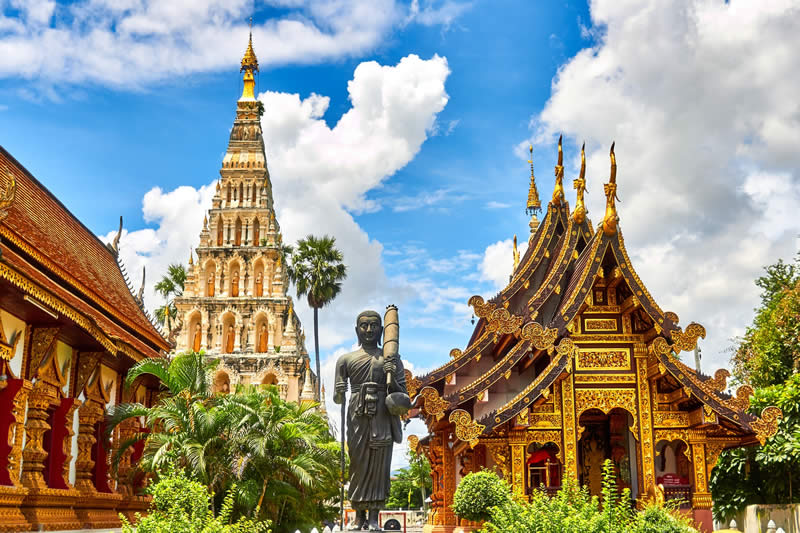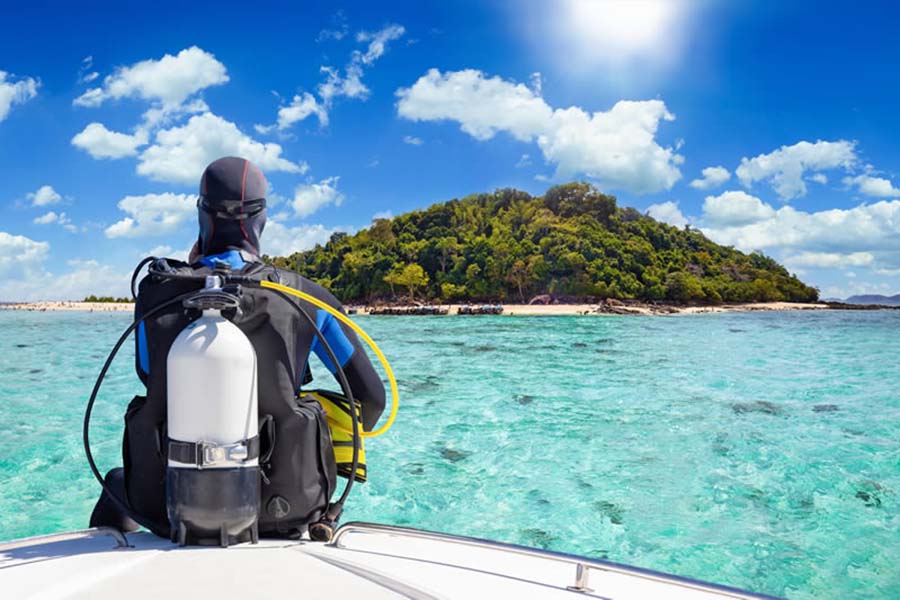Diving Camps in the Philippines: A Comprehensive Guide
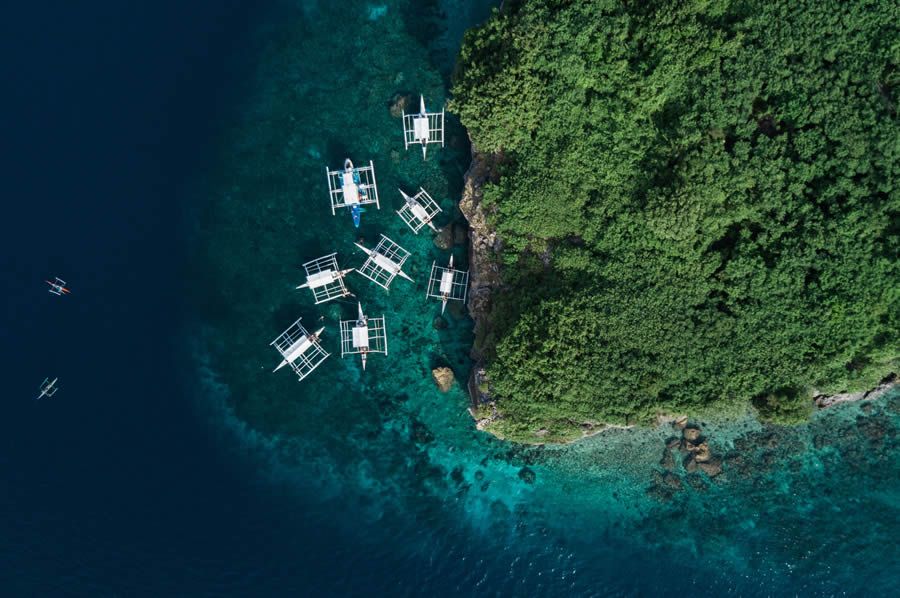
The Philippines, an archipelago nation with over 7,000 islands, offers some of the most spectacular diving opportunities in the world. Renowned for its diverse marine life and picturesque dive sites, this tropical paradise attracts divers of all skill levels seeking unforgettable underwater experiences. The warm waters and vibrant coral reefs create the perfect environment for encounters with various marine species, including thresher sharks, manta rays, and dolphins.
Dive camps in the Philippines provide the perfect blend of adventure and relaxation for those eager to explore the stunning underwater landscapes. Many of these dive resorts offer PADI certifications, guided dives, and top-notch facilities, ensuring a hassle-free and memorable experience for every visitor. Some popular locations among divers include Mactan Island in Cebu, known for its shore diving, wall, and drift diving opportunities, and the Tubbataha Reefs Natural Park, a UNESCO World Heritage site brimming with marine biodiversity.
Whether you're a seasoned diver or a complete beginner, the Philippines offers an abundance of diving camps and dive sites to suit every taste and skill level. Embark on an unforgettable adventure and immerse yourself in the underwater wonders that await in this incredible Southeast Asian destination.
- Top Diving Locations
- Dive Sites and Marine Life
- Shark Encounters
- Shipwrecks and History
- Dive Resorts and Accommodations
- Training and Certification
- Travel and Logistics
- Frequently Asked Questions
Top Diving Locations
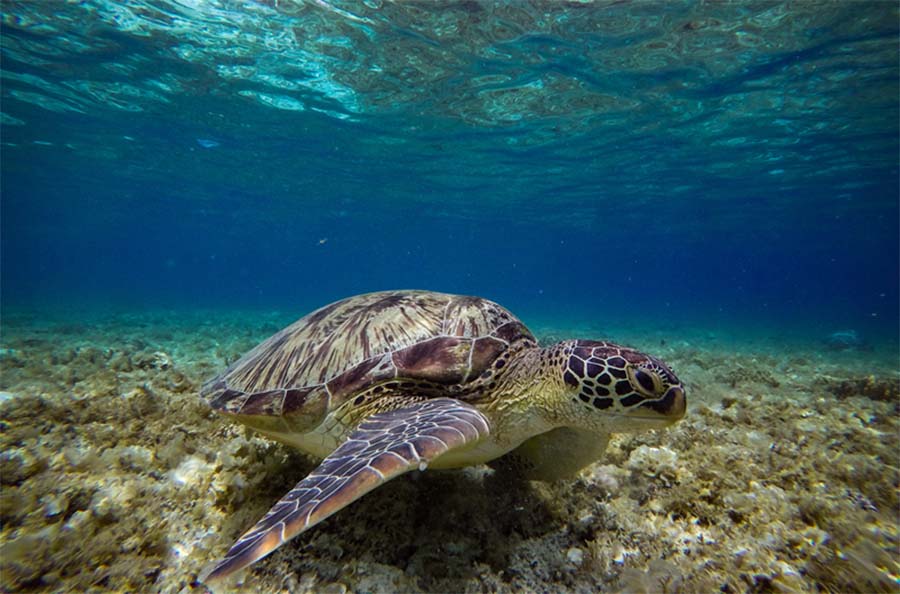
The Philippines is located within the Coral Triangle and is a top destination for divers around the world. This section will cover some of the most popular diving locations in the country, including Tubbataha Reef, The Visayas, Palawan, Coron, Anilao, El Nido, and Siargao.
Tubbataha Reef
Tubbataha Reef, a UNESCO World Heritage site, is renowned for its high biodiversity and pristine coral reefs. Located in the middle of the Sulu Sea, this remote area is best explored through liveaboard diving trips. Divers can expect encounters with various species of sharks, turtles, and rays, as well as numerous colorful reef fish and vibrant corals.
The Visayas (Cebu, Bohol, and Negros)
The Visayas region, encompassing islands like Cebu, Bohol, and Negros, offers a diverse range of dive sites. Highlights include Moalboal, Cebu, where divers can witness enormous sardine baitballs, and Apo Island, Negros Oriental, known for its stunning coral gardens and abundant marine life. The area also hosts a variety of macro life, making it ideal for both wide-angle and macro photography enthusiasts.
Palawan
Palawan, often referred to as "The Last Frontier," has several top diving spots such as El Nido, Coron, and the Tubbataha Reefs Natural Park. This region boasts stunning limestone cliffs, crystal-clear waters, and diverse marine life, including turtles, reef sharks, and the endangered dugongs.
Coron
Coron, situated in the northern part of Palawan, is famous for its shipwreck diving, offering several well-preserved Japanese wrecks from World War II. Divers can also explore the picturesque Barracuda Lake and the vibrant coral reefs surrounding the area.
Anilao
Anilao, located in Batangas province, is a muck diving paradise, known for its exceptional macro life. Photographers and critter enthusiasts will be delighted to find numerous rare and exotic species, including nudibranchs, frogfish, and seahorses. The area also offers stunning coral landscapes and healthy reefs, attracting a variety of reef fish.
El Nido
El Nido, another gem in Palawan, is famed for its dramatic limestone cliffs and crystal-clear lagoons. The area offers numerous diving opportunities, from shallow coral gardens to deeper wall dives, all teeming with diverse marine life. Some of the popular species to spot here include turtles, bumphead parrotfish, and various reef sharks.
Siargao
Siargao, primarily known among surfers for its world-class barrel waves, also offers excellent diving opportunities. The island's dive sites feature rich coral reefs and a variety of marine life, such as turtles, reef sharks, and barracudas. With its clear waters, unspoiled reefs, and dramatic underwater landscapes, Siargao is an ideal diving destination for those seeking a less crowded, off-the-beaten-path experience.
Dive Sites and Marine Life
The Philippines is home to a variety of dive sites that cater to different skill levels and preferences. With its rich biodiversity and stunning underwater scenery, this country is a diver's paradise.
One of the top dive sites in the Philippines is the Tubbataha Reef, a UNESCO World Heritage Site known for its spectacular marine life. This location offers crystal clear waters, a multitude of colorful coral gardens, and a wide array of marine species, such as sharks, turtles, and rays, making it an ideal destination for scuba diving.
Thresher shark enthusiasts should consider visiting Malapascua Island, one of the best places to dive with these incredible creatures. Divers often encounter thresher sharks during early morning dives. In addition, Gato Island, located nearby, boasts a 30-meter-long tunnel popular among divers.
For those who love smaller marine creatures, muck diving around Anilao or Dumaguete offers the opportunity to spot exotic species such as pygmy seahorses, nudibranchs, and frogfish. The Philippines is home to six out of seven known species of pygmy seahorses, which are unique attractions for underwater photographers and macro enthusiasts.
If you prefer snorkeling, the vibrant coral reefs scattered across the 7,641 islands provide ample opportunities to view colorful fish, turtles, and other marine life without the need for scuba gear.
Apart from the species mentioned, the Philippines is a hotspot for whale shark encounters, particularly in the waters around Donsol and Oslob. These gentle giants often swim close to the surface, allowing snorkelers and divers to witness their majestic presence.
Barracuda and various species of rays also inhabit the waters of the Philippines, adding to the wide variety of marine life encountered by divers. Many dive sites offer excellent visibility, further enhancing the underwater experience.
With its incredible marine biodiversity, stunning coral reefs, and numerous dive sites catering to different skill levels and preferences, the Philippines is a must-visit destination for diving enthusiasts and marine life aficionados.
Shark Encounters
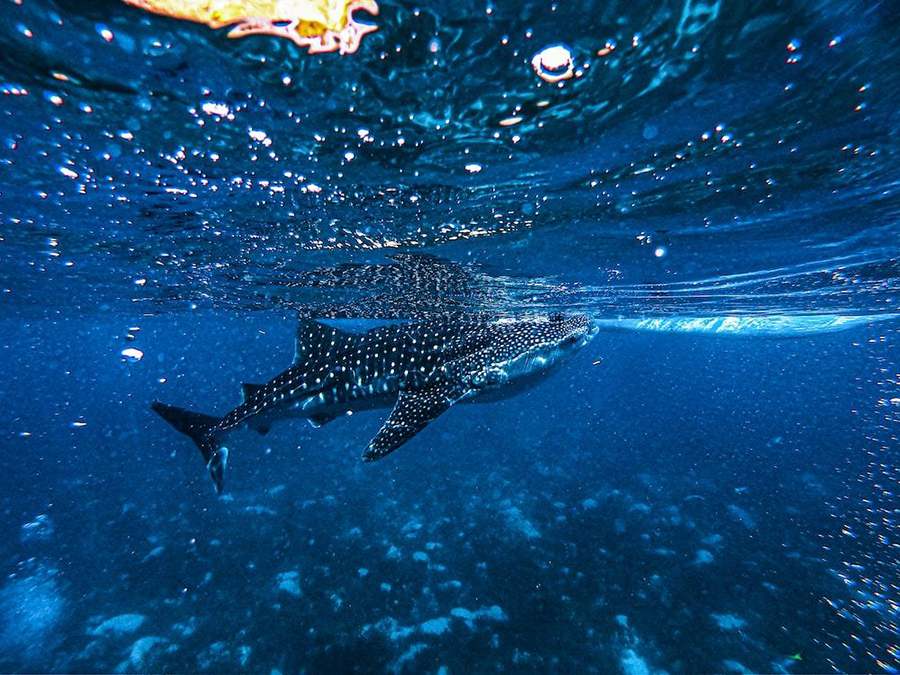
The Philippines offers a variety of diving locations where divers can encounter various species of sharks, including whale sharks and thresher sharks. One such diving location is Malapascua Island, situated at the northern tip of Cebu. This beautiful island, surrounded by white sandy beaches and clear blue waters, is famous for its thresher shark encounters at Monad Shoal.
Aside from thresher sharks, the Philippines is also known for its whale shark encounters. A popular place for this is Donsol, a small coastal town that is famous for its whale shark sightings. Swimming with the whale sharks, known locally as "Butanding," is regarded as the epitome of wildlife encounters and an experience not to be missed.
Another top destination for shark enthusiasts is the Tubbataha Reefs Natural Park, often referred to as 'Shark Heaven' by the Marine Megafauna Foundation team. Tubbataha is the largest marine protected area in the Philippines, boasting diverse marine life, including whales, dolphins, and a variety of shark species.
In addition to sharks, the Philippines' vibrant coral reefs are home to an array of other marine species, such as the flametail snapper. This colorful fish can often be found swimming around the pristine reefs surrounding Panglao and Balicasag islands, which are also part of the Sharks & Reefs Philippines Diving Holiday.
In summary, the Philippines provides numerous opportunities for divers seeking shark encounters, from snorkeling with whale sharks in Donsol to witnessing elusive thresher sharks in Malapascua. Furthermore, the rich marine biodiversity in the area ensures that divers can witness various marine species beyond sharks, such as the flametail snapper and an array of vibrant coral reefs.
Shipwrecks and History
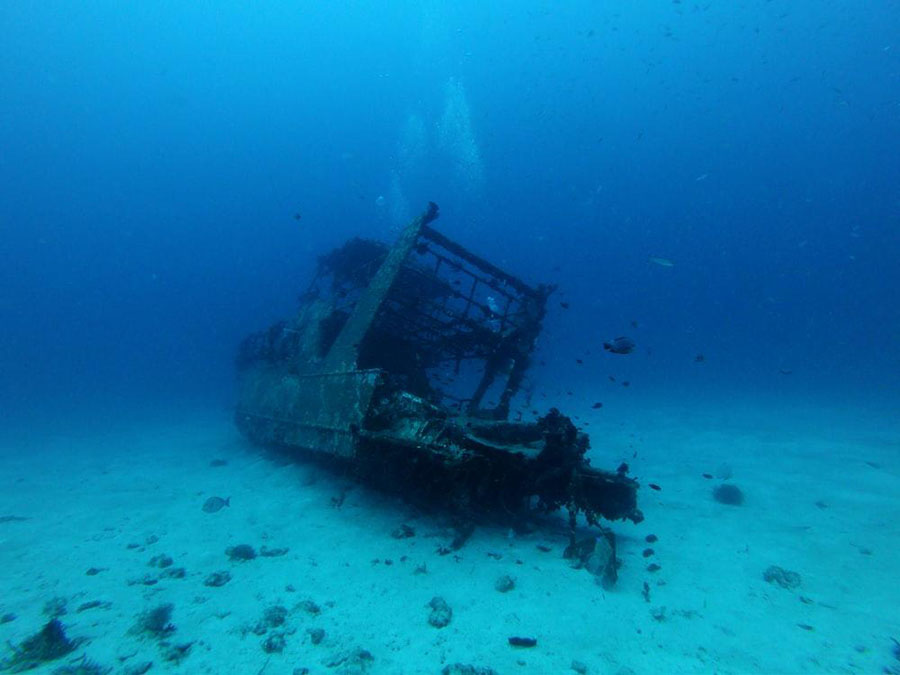
The Philippines is known for its rich underwater world, making it an ideal destination for divers seeking new adventures. Among the most fascinating attractions are the shipwrecks scattered throughout the region, remnants of World War II battles that took place between the Japanese and Allied forces. These wreck dives offer divers a unique opportunity to explore history firsthand, while also experiencing a diverse array of marine life.
At the heart of this diving arena is Coron Bay in Palawan, a scuba-diving hotspot renowned for its well-preserved fleet of World War II Japanese warships resting beneath the waves. Divers can explore several wrecks, including the Okikawa Maru, which is one of the largest and most iconic dive sites in Coron Bay. Submerged in relatively shallow waters, the Okikawa Maru is easily accessible to divers, giving them a chance to witness the grandeur of this 160-meter-long oil tanker up close. The wrecks of Coron Bay are not only historically significant, but they also serve as artificial reefs, providing sanctuary to diverse marine species.
Another popular destination for wreck dives in the Philippines is Subic Bay. Here, divers can explore several historic wrecks, including both Japanese and American ships. The proximity of these wrecks to the shore allows for easy access, making Subic Bay an ideal destination for those looking to combine history with natural beauty.
While diving in these shipwrecks is undoubtedly a thrilling experience, it is essential to approach them with respect and caution. Given the historical significance and human stories connected to these wrecks, divers should keep in mind the importance of conserving these underwater time capsules for future generations. Ensuring responsible exploration of these sites is crucial to preserving their history and legacy.
In summary, the shipwrecks and wrecks found throughout the Philippines offer divers a unique glimpse into World War II history, while also supporting marine biodiversity as artificial reefs. Their accessibility and stunning underwater views make these wreck dives a must-visit for both history buffs and diving enthusiasts.>
Dive Resorts and Accommodations
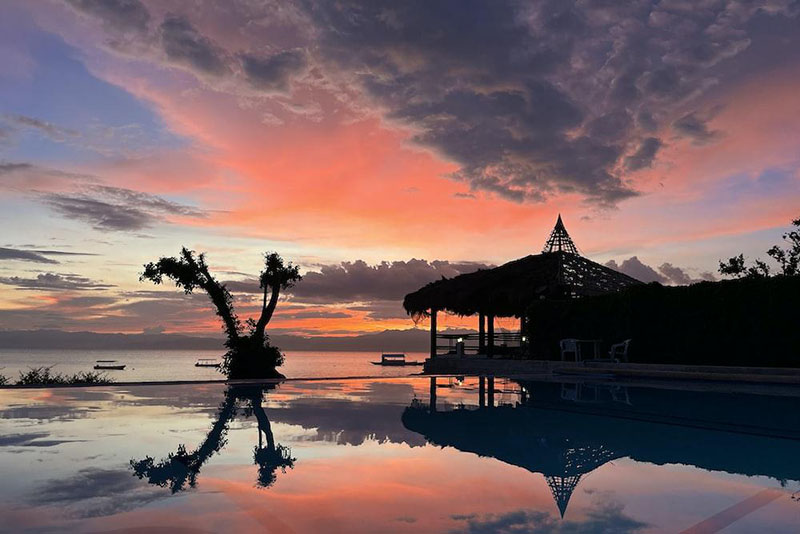
The Philippines is known for its rich marine life and pristine diving spots, making it a top destination for divers around the world. Several dive resorts and accommodations cater to the needs of both novice and experienced divers, providing comfortable stays and access to excellent dive sites.
One can find over 26 dive resorts in the Philippines, each offering unique experiences and amenities. Many of these resorts are located near the country's best diving spots, providing easy access to dive operators and dive centers. Some popular dive resorts include Anda in Bohol, Sangat Island Resort, and more.
In addition to resorts, there are various hotels that cater to divers visiting the Philippines. These accommodations often collaborate with dive operators to provide packages that include lodging, diving courses, and excursions. These partnerships make it convenient for travelers to plan their vacation and enjoy the best diving experiences the country has to offer.
Dive operators in the Philippines provide a variety of services to cater to diverse needs and preferences. They offer diving courses for beginners, guided dives for experienced divers, and equipment rentals for those who prefer to explore on their own. Many of these dive operators work closely with hotels and resorts, ensuring seamless coordination for a hassle-free diving vacation.
Moreover, the amenities provided at these accommodations usually include essential facilities like free Wi-Fi, breakfast, and easy access to swimming pools and beaches. Some resorts also offer luxurious options like spa services, beachfront villas, and fine dining experiences.
In summary, the Philippines has numerous dive resorts, hotels, and operators that cater to divers with varying levels of expertise. These accommodations provide essential amenities, convenient access to dive sites, and partnerships with dive operators for an unforgettable underwater adventure.
Training and Certification
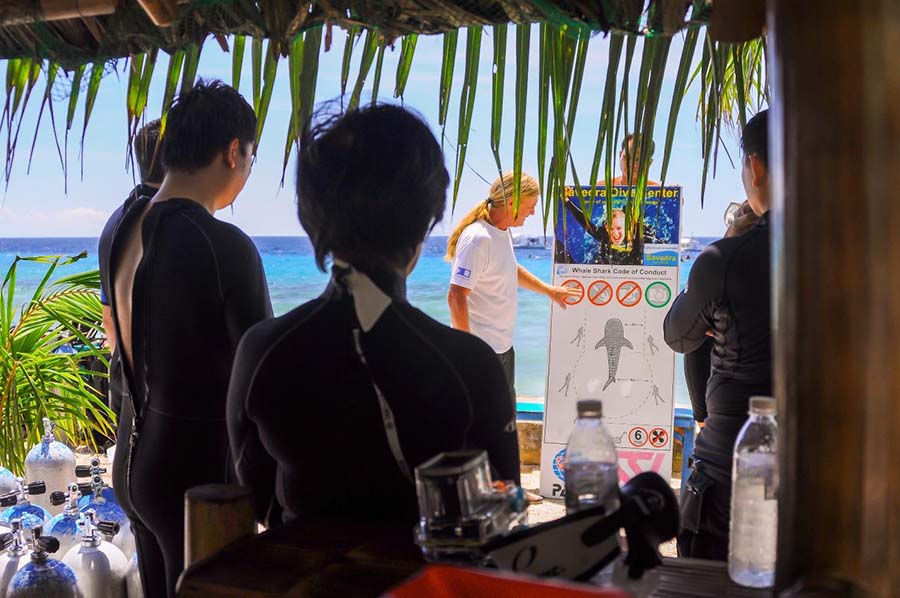
The Philippines offers a wide range of diving courses and training camps for both beginners and advanced divers. Among the internationally recognized certifications available are PADI Open Water Diver, Advanced Open Water Diver, and Divemaster courses. These courses provide divers with the skills and knowledge necessary to safely explore the underwater world.
The PADI Open Water Diver course typically takes 2 to 3 days to complete and certifies participants to dive to a depth of 18 meters with a buddy. This course is the most popular option for beginners, offering comprehensive training on both theoretical and practical aspects of scuba diving.
For those who have completed their Open Water certification and are looking to expand their diving skills, the PADI Advanced Open Water Diver course offers a chance to experience a variety of different diving environments and techniques. Over two days, students complete 5 distinct dives, with each dive focused on a specific skill set or environment, such as navigation, night diving, or deep diving. This course is also available for juniors aged 12 years and above.
Divers seeking to take their skills even further and potentially work within the industry can choose to enroll in the PADI Divemaster course. This course provides intensive training in advanced diving techniques, equipment management, and dive planning. It equips candidates with the necessary knowledge and skills to lead and guide other divers, as well as assist with dive instruction.
When selecting a training camp or diving school, it is essential to choose a reputable organization with experienced instructors. The Philippines boasts numerous PADI-certified schools and instructors, ensuring quality education and adherence to international safety standards. No matter the level of experience or chosen certification, the Philippines offers an unforgettable diving adventure and excellent training opportunities for scuba enthusiasts.
Travel and Logistics
The Philippines, specifically locations such as Bohol, Cebu, Dumaguete, and Negros Oriental, boasts many exquisite diving camp experiences for diving enthusiasts. One must consider several factors when planning a diving trip in the Philippines, such as transportation, accommodations, and connectivity.
Many diving camps are situated in beautiful locations such as Panglao Island, Malapascua, and Moalboal, offering pristine white sand beaches and exceptional underwater experiences. Travelers can opt for domestic flights from Manila or Cebu to reach these destinations. Once you arrive, there is a range of transportation options, such as jeepneys, tricycles, and ferries, depending on the specific area you are visiting.
When it comes to cuisine, the Philippines offers a diverse and mouthwatering array of local dishes that cater to various preferences. Dining options can range from simple beachside eateries to more upscale restaurants within the camps. Intrepid travelers should not miss the opportunity to savor some fresh seafood dishes as well as local delicacies like adobo and sinigang.
While traveling to the Philippines, one might encounter varying levels of internet connectivity. In essential tourist spots, reliable Wi-Fi and mobile internet services are usually available. However, remote diving locations might have limited or weak connections, so it's wise to plan accordingly if you need to stay connected throughout your trip.
Whether you're a seasoned diver or a first-time underwater explorer, the Philippines offers incredible opportunities for unique diving adventures. With proper planning and preparation, you'll have an unforgettable experience in these phenomenal diving destinations.
Frequently Asked Questions
What are the top scuba diving spots in the Philippines?
The Philippines offers a wide variety of scuba diving spots, each with its unique attractions. Some top diving sites include Tubbataha Reef, a UNESCO World Heritage Site known for its spectacular marine life; Amos Rock, accessible only by liveaboard; and the beautiful Anilao, rich in marine diversity. The diverse marine life and stunning coral reefs make these spots an unforgettable diving experience.
Which months are ideal for diving in the Philippines?
Although you can dive in the Philippines all year round, the best months to dive depend on the specific location and weather conditions. Generally, the dry season, from November to May, offers the best visibility and calmest seas, with March to June being the most popular months for visiting Tubbataha Reef. Always consider local weather updates and tourist influx when planning your diving trip.
How much does it cost to scuba dive in the Philippines?
The cost of scuba diving in the Philippines ranges from moderately affordable to luxurious. Beginners' dive courses typically cost around $300-$500, while advanced courses can go up to $600 or more. Single dives range from $25-$35, depending on the location and dive center. Extras like equipment rental, marine park fees, and liveaboard experiences will increase the cost.
What is the best diving school in the Philippines?
The Philippines boasts numerous reputable diving schools catering to all skill levels and interests. The "best" diving school can be subjective, as it depends on your preferences and needs. Researching the school's certifications, reviews, and the quality of instructors can help ensure a safe and enjoyable diving experience.
Are there any affordable diving packages available?
Yes, there are many affordable diving packages available in the Philippines, catering to different budgets and locations. Packages usually include accommodation, meals, and multiple dive sessions. It is essential to compare package inclusions and ensure that the diving center is well-reviewed, established, and reliable.
Which location is considered the diving capital of the Philippines?
Anilao, located in the province of Batangas, is often referred to as the diving capital of the Philippines. Famous for its rich biodiversity and variety of sites, Anilao offers easy beach entries, making it a popular location for novice divers and those seeking dive certifications.
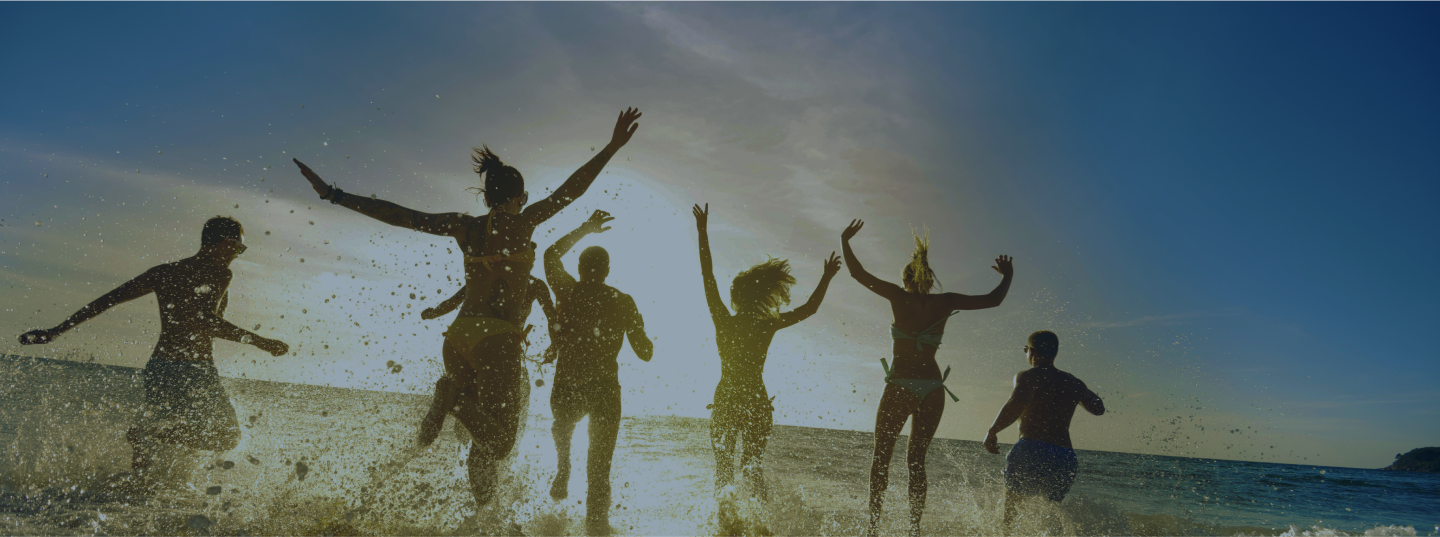
Enjoy a Truly Unique CAMP
Experience With Fellow Travelers
SatoriCamp will match you next vacation with like-minded travelers from around the world.
Find your Camp


